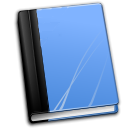Technical Reference – CSV flight recordings
What are .csv flight recordings?

CSV (comma-separated values) files are one of the simplest ways to exchange data between applications. This makes it a great format for data coming from a real-life flight-recorder or for anyone without a technical background who wants to display some telemetry in Tacview.
Most flight recording and management tools are usually already able to export their data in .csv file format. Just keep in mind that because of its simplicity, you may not be able to export all possible kind of data.
Tacview natively supports more and more flight recording devices like the Garmin G1000. If you would like Tacview to support additional devices or data, feel free to contact us.
How to use .csv files with Tacview?
Here is an example of csv file from real-life. Please see below for a detailed list of the fields officially supported by Tacview.
You need at least Tacview Standard. Then simply use the file-open command from the main menu to load your file.
The main limitation is that the data of only one aircraft (or any other battlefield unit) can be stored in each .csv file. For now, it is not possible to describe data for multiple aircraft within one file. However you can merge multiple files coming from different sources to replay them all at once in Tacview using the appropriate command. For example: You can open two .csv flight-recordings coming from two different aircraft, at once in Tacview, to see both aircraft flying together in the same world.
You can specify the following metadata in each .csv file name:
- The first part is the NATO name of the corresponding aircraft
- The second – optional – part is the name of the pilot (in parenthesis)
- The third – optional – part is the color of the aircraft [in brackets]
Here in an example of two typical .csv files you could open together:
- Mirage 2000C (Fahrenheit) [Green].csv
- F-14A (Maverick & Goose) [Blue].csv
- A-4E (Viper) [Red].csv
Even if other units may be recognized and supported by Tacview, your data should be always stored in the metric system, and angles expressed in degrees. Here is the list of data (columns headers) supported:
- Time: Time expressed in either Coordinated Universal UTC YYYY-MM-DDThh:mm:ssZ time format, or the offset in seconds since the beginning of the flight
- Longitude: Longitude in degrees (negative for west, positive for east)
- Latitude: Latitude in degrees (negative for south, positive for north)
- Altitude: ASL altitude in meters
- Roll (deg): Roll in degrees (clockwise orientation: positive when rolling to the right, negative to the left)
- Pitch (deg): Pitch in degrees (positive when the aircraft is pointing to the sky, negative when pointing to the ground)
- Yaw (deg): Orientation in degrees relative to the true north
Tacview smartly detects the separators used in your .csv files. However, for best results it is suggested to stick to the following convention:
- Coma , to separate data
- Point . for decimal numbers mark
- Double quotes "{/mono} surrounding strings containing comas
Here is an example of a properly formatted file:
Time,Longitude,Latitude,Altitude,Roll (deg),Pitch (deg),Yaw (deg)
0.00,-116.6847222,32.72722222,34,-0.11536,-0.14832,295.76
4.00,-116.6847222,32.72722222,34,0.36255,-0.26917,295.25
8.00,-116.685,32.72722222,35,0.42297,-0.2417,297.27Officially Supported Fields
Here is the list of csv fields officially supported by Tacview. They can be stored in any order and most of them are optional. Only time and position are mandatory. Aside time, any record can be left blank when its value is equal to the previous record value.
For now, only one aircraft can be described per csv file. Support for several aircraft at the same time will be added in a near future.
| Field | Value |
|---|---|
| Time | UTC time for the current record. Fraction of second are supported. 2011-06-02T05:00:47.13Z |
| Timestamp | Unix time stamp for the current record. Relative to 1970-01-01T00:00:00Z expressed in seconds and fraction of second. This is an alternate way to specify each time record. 1306990847.13 |
| Longitude | Object longitude in degrees (positive toward the east). 41.625130740936 |
| Latitude | Object latitude in degrees (positive toward the north). 41.591041652197 |
| Altitude | Object altitude in meters MSL (above sea level, also known as ASL in some countries). 2000.14 |
| Roll | Roll in degrees (Positive when tilting the aircraft to turn to the right). -4.2 |
| Pitch | Pitch in degrees (positive when climbing). 7.10001 |
| Yaw | Yaw (heading) in degrees relative to the true north. 312.2 |
| AOA | Angle of attack 4.6 |
| TAS | True airspeed (m/s) 157.7 |
| CAS | Calibrated airspeed (m/s) 139.1 |
| IAS | Indicated airspeed (m/s) 137.3 |
| Mach | Mach number 0.5 |
